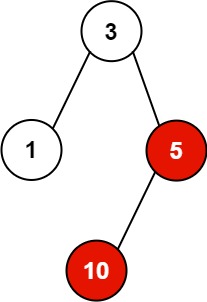Table of Contents
Problem Statement
Kill Process LeetCode Solution – You have n processes forming a rooted tree structure. You are given two integer arrays pid and ppid, where pid[i] is the ID of the ith process and ppid[i] is the ID of the ith process’s parent process.
Each process has only one parent process but may have multiple children processes. Only one process has ppid[i] = 0, which means this process has no parent process (the root of the tree).
When a process is killed, all of its children processes will also be killed.
Given an integer kill representing the ID of a process you want to kill, return a list of the IDs of the processes that will be killed. You may return the answer in any order.

Input: pid = [1,3,10,5], ppid = [3,0,5,3], kill = 5 Output: [5,10] Explanation: The processes colored in red are the processes that should be killed.
Explanation
we can use a hashmap that stores a particular process value and the list of its direct children.
And then treat it as a tree traversal problem. (BFS/DFS)
or
Construct an adjacency list that maintains the child process linked to that process. Run BFS by starting with the process to be killed. Store all the processes that are killed
Code
C++ Code for Kill Process
class Solution {
public:
vector<int> killProcess(vector<int>& pid, vector<int>& ppid, int kill) {
vector<int> killed;
map<int, set<int>> children;
for (int i = 0; i < pid.size(); i++) {
children[ppid[i]].insert(pid[i]);
}
killAll(kill, children, killed);
return killed;
}
private:
void killAll(int pid, map<int, set<int>>& children, vector<int>& killed) {
killed.push_back(pid);
for (int child : children[pid]) {
killAll(child, children, killed);
}
}
};Java Code for Kill Process
public class Solution {
public List<Integer> killProcess(List<Integer> pid, List<Integer> ppid, int kill) {
if (kill == 0) return pid;
int n = pid.size();
Map<Integer, Set<Integer>> tree = new HashMap<>();
for (int i = 0; i < n; i++) {
tree.put(pid.get(i), new HashSet<Integer>());
}
for (int i = 0; i < n; i++) {
if (tree.containsKey(ppid.get(i))) {
Set<Integer> children = tree.get(ppid.get(i));
children.add(pid.get(i));
tree.put(ppid.get(i), children);
}
}
List<Integer> result = new ArrayList<>();
traverse(tree, result, kill);
return result;
}
private void traverse(Map<Integer, Set<Integer>> tree, List<Integer> result, int pid) {
result.add(pid);
Set<Integer> children = tree.get(pid);
for (Integer child : children) {
traverse(tree, result, child);
}
}
}Python Code for Kill Process
class Solution(object):
def killProcess(self, pid, ppid, kill):
"""
:type pid: List[int]
:type ppid: List[int]
:type kill: int
:rtype: List[int]
"""
myTree = dict()
for i, parent in enumerate(ppid):
myTree[parent] = myTree.get(parent,[])
myTree[parent].append(pid[i])
res = []
stack = [kill]
while stack:
cur = stack.pop()
res.append(cur)
stack.extend(myTree.get(cur,[]))
return resComplexity Analysis for Kill Process LeetCode Solution
Time Complexity
O(n+e) since we are doing a bfs traversal.
Space Complexity
O(n) since we store the nodes in a stack/ array.
Reference: https://en.wikipedia.org/wiki/Tree_traversal